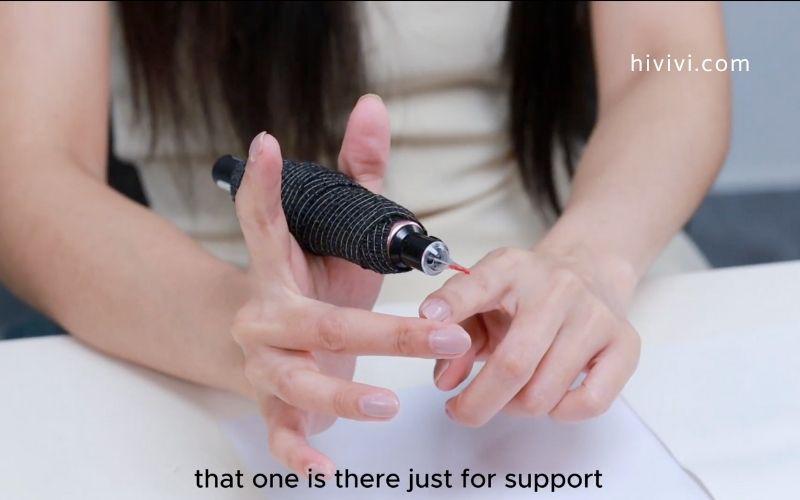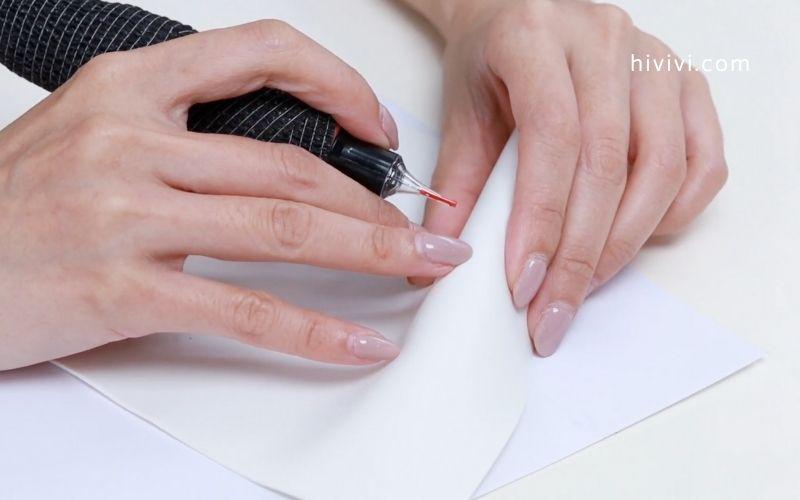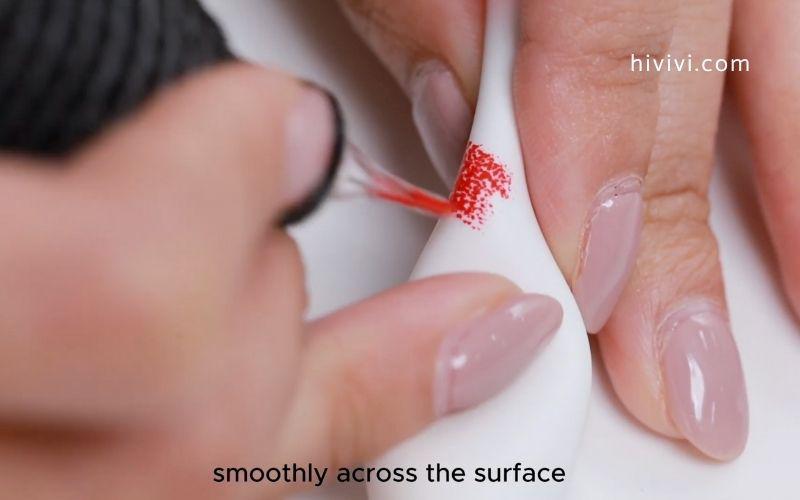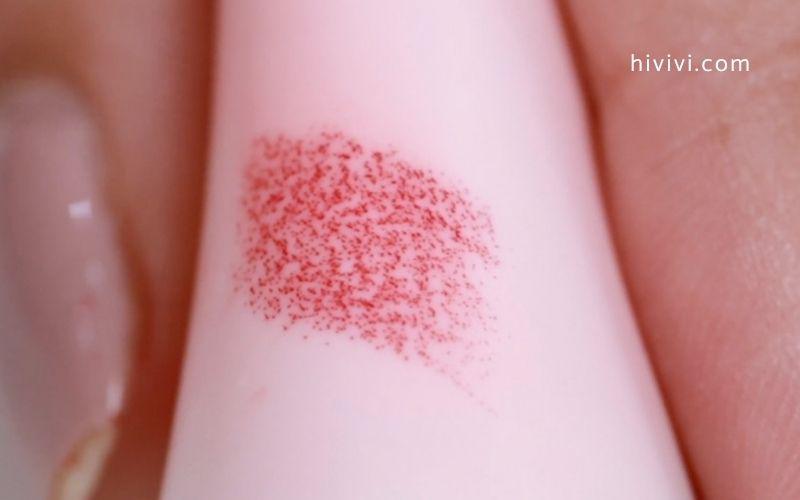How to Use a PMU Machine for Lip Tinting
Table of contents
- What is PMU Lip Tinting?
- Essential Tools and Equipment for Lip Tinting
- How to Set Up a PMU Machine for Lip Tinting
- Step-by-Step Lip Tinting Procedure Using PMU Machine
- Common Mistakes to Avoid in PMU Lip Tinting
- How to Practice PMU Lip Tinting as a Beginner
- Expert Tips to Improve Lip Tinting Results
- Frequently Asked Questions (FAQ)
- Final Thoughts: Confidently Start Your Lip Tinting Journey
Learning how to use a PMU machine for lip tinting is a must-have skill for any beauty professional looking to expand into permanent makeup. Whether you’re just starting out or want to sharpen your technique, mastering your tools and process ensures better results, safer procedures, and satisfied clients. In this guide, we’ll walk you through everything from choosing the right machine to performing a clean, natural-looking lip tint safely and confidently.

What is PMU Lip Tinting?
PMU (Permanent Makeup) lip tinting techniques enhance the natural color and shape of the lips using a specialized PMU machine.
Instead of applying lipstick daily, clients can enjoy softly tinted, fuller-looking lips for years with minimal maintenance.
The procedure involves implanting pigment into the upper layers of the skin, creating a natural flush of color. Benefits include correcting asymmetry, restoring faded tones, and adding definition to the lip border.
Unlike traditional lipstick, PMU lip tinting offers a smudge-proof , waterproof , and semi-permanent solution that lasts 2–3 years with proper care and touch-ups. The results are semi-permanent, lasting anywhere from two to three years with proper care and touch-ups.
However, achieving those results safely and beautifully depends on how well the artist understands and uses their PMU machine. Clean technique, proper pigment choice, and the right settings make all the difference in client satisfaction and healing.
Essential Tools and Equipment for Lip Tinting
To get started, you’ll need the following tools in your setup:
PMU Machine
- Choose between rotary, pen-style, or digital machines
- Pen-style machines are often beginner-friendly due to their lightweight, ergonomic design
Needle Types and Cartridges
- Use 1RL or 3RL cartridges for lip outlines
- Use 3RS or 5RS for shading
- Choose high-quality, sterile, single-use needles
Pigments
- Always use lip-safe pigments from reputable brands
- Opt for shades that complement the client’s undertones
- Avoid pigments with high titanium dioxide content for lips
Other supplies
- Topical numbing cream (with epinephrine for less bleeding)
- Disposable gloves and barrier film
- Wipes, cotton pads, pigment rings
- Machine cover sleeves and work surface protection
How to Set Up a PMU Machine for Lip Tinting
Before you begin any treatment, your setup should be clean, safe, and ready. Here’s how to set up your PMU machine for lip tinting:
1. Unpack and sterilize
- Wash your hands thoroughly and disinfect your workspace
- Sanitize your machine body and prepare a sterile work area
2. Assemble the needle cartridge
- Insert the correct needle securely into the machine
- Make sure it’s aligned properly and locked into place
3. Connect to the power supply
- Plug the PMU machine into a reliable power source
- Set up your foot pedal (if applicable)
4. Adjust voltage settings
- Ideal voltage for lip tinting: 6.0V to 7.5V depending on your machine and speed preference
- Lower voltage = more control, especially for shading soft lips
5. Safety check
- Wear gloves
- Check that the needle moves smoothly and no pigment leaks
- Ensure your work area is covered and tools are within reach
Step-by-Step Lip Tinting Procedure Using PMU Machine
Follow this guide to perform lip tinting safely and efficiently:
1. Prepping the client
- Have a consultation to choose pigment and shape
- Clean the lips thoroughly
- Apply numbing cream for 15–20 minutes
- Wipe off excess and mark the desired outline (if needed)

2. First pass – Outlining
- Use a 1RL or 3RL needle to create the border of the lips
- Work slowly and evenly
- Avoid dragging or pressing too deep

3. Second and third passes – Filling and shading
- Switch to 3RS or 5RS for smooth shading
- Work in layers to gradually build color
- Allow skin to rest between passes if needed

4. Technique tips
- Maintain consistent hand pressure
- Stretch the skin for precision
- Use small circular or pendulum motions for shading

5. Post-procedure care
- Gently wipe the area and apply healing balm
- Provide aftercare instructions: avoid touching, no spicy foods, no lip products for a few days

Common Mistakes to Avoid in PMU Lip Tinting
Even skilled artists can run into trouble if they skip the fundamentals. Here are key mistakes to avoid:
- Using the wrong needle or wrong configuration for lips
- Overworking the skin, causing trauma or scarring
- Setting voltage too high, leading to pigment blowout
- Choosing pigment without considering undertones
- Poor hygiene or improper sterilization = infection risk
How to Practice PMU Lip Tinting as a Beginner
For those just starting out, mastering PMU lip tinting begins with proper practice not on clients, but on latex skins that mimic the texture of real lips. These practice sheets are ideal for developing muscle memory and understanding the machine’s weight, vibration, and rhythm. Beginners should first focus on sketching lip shapes, practicing consistent outlines, and then progressing to gentle shading. The goal is to build confidence in handling the machine and maintaining control over depth and speed.
With repeated practice, you’ll start to develop your technique: how much pressure to apply, how to stretch the skin effectively, and how to avoid common mistakes like overworking an area. Once comfortable, you can move on to live models under supervision. Patience, consistency, and continuous self-assessment are key to developing professional-level precision. If available, beginner-friendly training kits from trusted providers like Hivivi can also provide a structured way to learn and improve.
Expert Tips to Improve Lip Tinting Results
Even once you’re comfortable with the basics, there are expert-level techniques that can take your PMU lip tinting results to the next level. One of the most important is adapting your approach based on the client’s natural lip tone. For example, clients with melanin-rich or cool-toned lips may benefit from a color correction layer before applying the final shade. Understanding undertones and layering pigment gradually helps create a more even, flattering finish that lasts.
Using high-quality needles and cartridges ensures smooth pigment flow and minimizes trauma to the skin. Many professionals recommend working in soft, even passes and allowing the skin to rest between layers for better absorption and retention. It’s also important to educate your client on the healing process swelling, peeling, and some fading are normal. Let them know that optimal results often take two sessions, with a touch-up scheduled 6 to 8 weeks after the initial procedure. With time, technique refinement, and the right tools, your results will only continue to improve.
Frequently Asked Questions (FAQ)
What voltage should I use for PMU lip tinting?
Most artists use between 6.0V and 7.5V depending on their machine and style. Always test before starting.
Can beginners use PMU machines for lips?
Yes, with proper training and practice. Beginners should always start on latex and build confidence gradually.
How deep should the needle go when tinting lips?
Aim for the upper dermis (about 1mm). Going too deep may cause bruising or pigment migration.
How long does PMU lip tinting last?
Typically 2–3 years , depending on pigment, lifestyle, and skincare habits. Annual touch-ups may be needed.
Is PMU lip tinting painful?
With a good numbing agent, most clients feel only mild discomfort. Some describe it as a tingling or scratchy sensation.
Final Thoughts: Confidently Start Your Lip Tinting Journey
Knowing how to use a PMU machin e for lip tinting is more than a technical skill, it's an art form. With the right setup, attention to hygiene, and consistent practice, you can create stunning, long-lasting results for your clients.
Ready to level up your PMU journey?